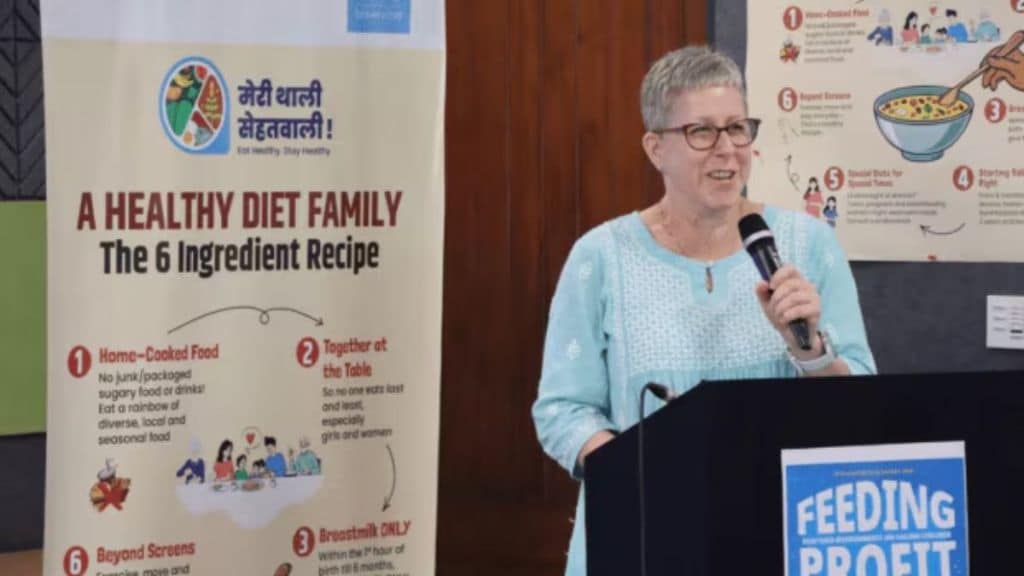The United Nations International Children’s Emergency Fund (UNICEF) recently unveiled its Child Nutrition Global Report, shedding light on some pertinent child nutrition and health-related issues worldwide. The report further uncovered some disturbing trends that shed light on the larger obesity crisis that stands to grip the Indian populace.
According to the latest report obesity has for the first time in history surpassed underweight and malnutrition to become the biggest nutrition and health related concern for school-aged children and teenagers.
Speaking at a media roundtable event organised by the United Nations, Marie-Claude Desilets chief at UNICEF India said that as media exposure to fast food advertising increases for all sections of the Indian society, the population will witness a rapid rise in teenagers suffering from overweight and obesity.
Why is India particularly at risk?
As per the authors of the study, India is beginning to face the triple burden of malnutrition which consists of stunting & wasting (lack of growth in children due to inefficient diet), micronutrient deficiencies (microprotein and other vitamin deficiencies caused by an unbalanced diet) and obesity (condition of being overweight and physically laggard).
The report further notes that the chances of these traits occurring in the same family or even the same person in India has increased tremendously over the past few years.
What does the data say?
Data from India’s National Family Health Survey (NFHS) shows an alarming rise in registered cases of obesity in the country. As per the survey, records of obesity have increased by 127 percent between 2006 and 2021 among Indian children under the age of 5 years.
The survey further highlights that adult prevalence of the issue also rose significantly. Data records a 91 percent increase in women and a 146 percent increase in cases of obesity observed in men during the same period.
Generally, the overall prevalence of obesity across India is reported to be as high as 40.3%, with variations observed across states depending upon gender, and urban-rural settings. India is projected to have over 27 million children and teenagers living with obesity by 2030, accounting for 11 percent of the global burden.
Loss to the economy
Alongside health problems, come hospital bills. In a reaction to the report Dr. William Joe, an assistant professor at the Institute of Economic Growth recently revealed the high financial burden that comes with a poor diet.
“There is a high cost to poor diets which is fuelling an epidemic of non-communicable diseases. Once established in childhood or adolescence, obesity is extremely difficult to reverse and likely to persist into adulthood, leading to increased risk of diabetes, cardiovascular disease, hypertension and some cancers.” Joe said at an event in September.
The World Obesity Federation estimates obesity-related costs borne by India in 2019 at nearly $29 billion which represented 1 per cent of India’s GDP back then. As per the institute this figure is projected to reach a whopping $839 billion by 2060 representing 2.5 per cent of GDP.
What’s the psychological cost of Obesity?
Overweight and obesity are also often associated with low self-esteem, anxiety and depression among children and teenagers and could risk worsening their mental health. Such a challenge can expose parents to bear the emotional toll of their children’s mental health troubles and the financial strain of higher medical expenses and lost income to care for them.
The condition of Obesity in itself comes with increased burdens, as it has been scientifically shown to decrease an individual’s productivity and lack of financial providence with them making people more weak to temptations of splurging money on items like fast food and avoiding many social outings.
As quoted in the Indian Economic Survey 2024-25, Ultra Processed Food (UPF) consumption in India surged from USD 900 million (2006) to USD 37.9 billion (2019), growing at over 33% annually. Between 2011-2021, retail sales of these ultra processed food items grew at a Compound Annual Growth Rate (CAGR) of 13.7 per cent.
In its report the federation also highlighted that unhealthy diets are now the leading contributor to India’s disease burden, accounting for 56 per cent of it. Once considered a condition of affluence, obesity is now spreading rapidly in low and middle-income countries, including in India.


